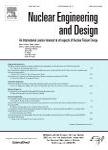版权所有:内蒙古大学图书馆 技术提供:维普资讯• 智图
内蒙古自治区呼和浩特市赛罕区大学西街235号 邮编: 010021

作者机构:Harbin Engn Univ Fundamental Sci Nucl Safety & Simulat Technol Lab Harbin 150001 Peoples R China Nigeria Atom Energy Commiss Man Power Training & Capac Dev Directorate Abuja Nigeria Nigeria Atom Energy Commiss Nucl Power Plant Dev Directorate Abuja Nigeria
出 版 物:《NUCLEAR ENGINEERING AND DESIGN》 (Nucl Eng Des)
年 卷 期:2025年第433卷
核心收录:
学科分类:08[工学] 0827[工学-核科学与技术]
基 金:Fundamental Research Funds for the Central Universities [3072022TS1501] China Academy of Engineering Physics Institute of Computer Application [HT-2022-115] National Natural Science Foundation for Young Scientists of China Heilongjiang Province Natural Science Foundation [LH 2021F002] Fundamental Research Funds for the Central Universities [3072022JC0404] Horizontal Project of China Nuclear Power Research and Design Institute [JDYY II-05-FWHT-GKJT-20234089] Horizontal Project of CGN (Shanghai) Simulation Technology Co., LTD . [093-NS-B-2024-C21-00001]
主 题:Path planning algorithm Radiation Decommissioning Nuclear High-risk environment
摘 要:This study introduces an optimized path planning framework employing the modified bidirectional rapidly exploring random tree star (Bi-RRT*) algorithm to enhance navigation efficiency and minimize radiation exposure in nuclear environments. The algorithm integrates a novel variable node parameter approach, dynamically adapting to diverse environmental complexities while prioritizing radiation dose minimization and path planning efficiency. Experimental evaluations across varied scenarios demonstrate that Bi-RRT* achieves substantial improvements over conventional RRT, RRT*, and Bi-RRT algorithms. Simulation results reveal that Bi-RRT* reduces radiation dose by up to 24.14% compared to RRT, 19.27% compared to Bi-RRT, and 3.3% compared to RRT* in cylindrical obstacles scenario. Path lengths improve by up to 15.57% over RRT and 11.72% over Bi-RRT in the environment with spherical obstacles, while computational time, although higher, is balanced against significant safety benefits. Configurations with quarter, half, and full nodes highlight a trade-off between dose minimization, computational cost, and path efficiency. The half node configuration consistently provides the best trade-off between computational efficiency and radiation dose optimization, with manageable computational overhead. The full node configuration excels in minimizing path length and radiation dose but incurs the highest computational cost, making it more suitable for applications with abundant computational resources. Conversely, the quarter node configuration prioritizes speed, achieving the fastest computation time but with compromised safety and efficiency, making it ideal for real-time operations where dose minimization is secondary. Analysis across environments with homogeneous and heterogeneous radiation distributions and varying obstacle geometries underscores the algorithm s adaptability and robustness. By achieving superior dose minimization, competitive path lengths, and scalable computat